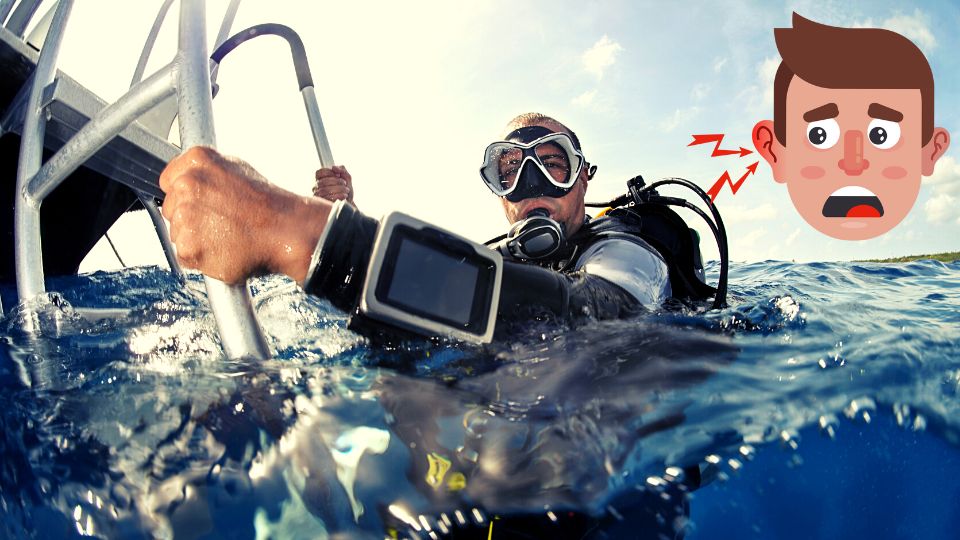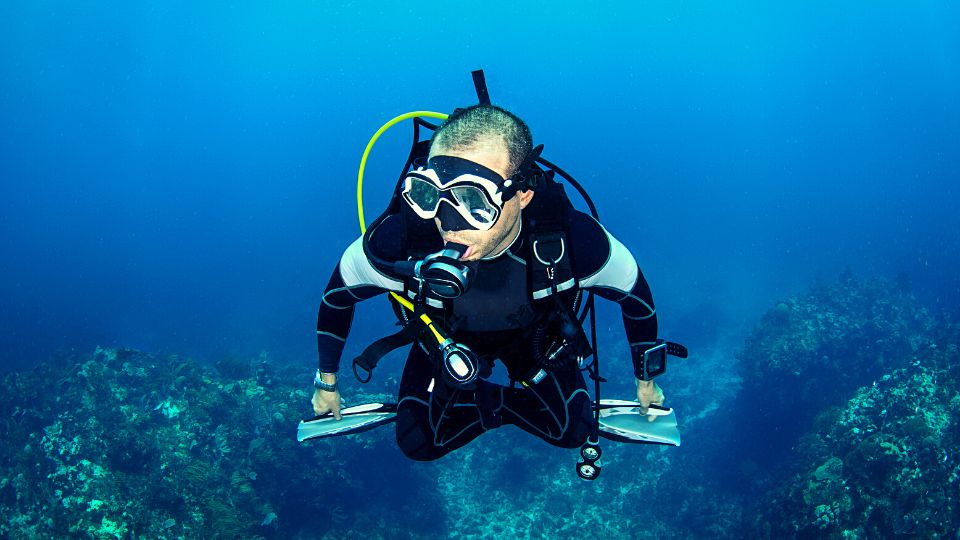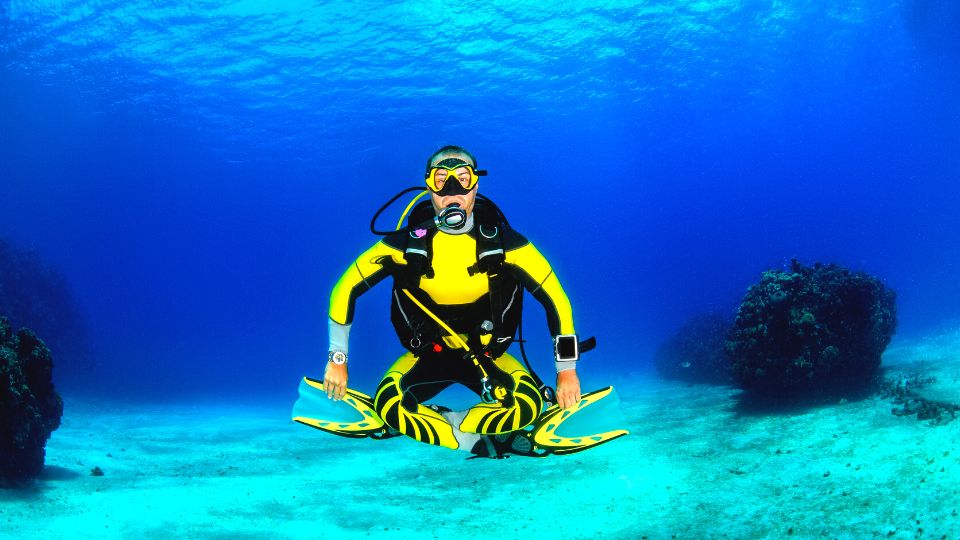Scuba diving is an exciting and adventurous activity that allows you to explore the underwater world. However, scuba divers must deal with the pressure changes that occur as they descend into the ocean’s depths.
Pressure changes can have significant impacts on the body, and it is essential for scuba divers to understand how to manage these changes to stay safe and healthy. In this article, we will explore how scuba divers deal with pressure changes during a dive.
We will discuss the physics of pressure changes, the impact of pressure on the body, and techniques that scuba divers use to equalize pressure in their ears, sinuses, and mask.
Understanding Barotrauma
Barotrauma is an injury that occurs when scuba divers experience pressure changes during their dive. These changes can affect lungs, gastrointestinal tract, part of the face covered by a mask, eyes and ears.
Divers descend, their body’s volume of air increases while barometric pressure from sea level rises. This is caused by gas expanding under pressure.
Eustachian tubes connect a person’s ears to their throat at the back. These tiny tubes open to balance air pressure inside the middle ear with external noise.
Blockage of these tubes can result in an imbalance between pressures inside and outside the eardrum, leading to pain or muffled hearing.
In severe cases, the eardrum can rupture and fluid leaks out, leading to hearing loss and dizziness.
Other types of barotrauma include pulmonary barotrauma, which occurs when the pressure in the lungs becomes too great to support breathing, mask barotrauma when air inside a face mask becomes compressed, sinus and ear barotrauma when pressure doesn’t equalize within sinuses or ear canals.
Factors that Contribute to Barotrauma
Breathing air under pressure causes excess inert gas (usually nitrogen) to dissolve in and saturate body tissues. To clear this saturated air during ascent, divers must exhale through respiration; otherwise it could interfere with oxygenation of tissue oxygenation and blood flow.
Decompression sickness or an explosion can cause complications with the lungs, sinuses, and other organs. Additionally, barotrauma in the ears, nose, and throat is possible.
Ear barotrauma occurs when the pressure in your ears suddenly shifts from inside to outside and back again, often due to blocked spaces caused by earplugs or other items in your canal. Earplugs or other items in the ear canal may prevent this from occurring and you will experience unequalized hearing with water pressure fluctuations.
Rapid ascents can also cause air pressure from above to be drawn into your middle ear, damaging its eardrum and inner ear, leading to ear pain, dizziness, or hearing loss.
In severe cases, ear infections or blockage of the Eustachian tubes can lead to barotrauma. The ear canal may fill with mucus and the nerve endings on your eardrum stretch, making it difficult to equalize your ears – this could result in damage and rupture the round windows or oval windows between your middle and inner ears.
Identifying Barotrauma Symptoms
Scuba divers understand the dangers of pressure changes during descent. That’s why many divers practice the Valsalva maneuver to maintain equal pressure in their ears during ascent.
However, sometimes even this may not be enough to prevent barotrauma. In such cases, it’s essential to recognize the symptoms of barotrauma so you can determine if you’re experiencing one of the potential injuries that could happen while diving.
Ear barotrauma, also known as airplane ear, is the most common scuba diving injury. This can occur if your Eustachian tube–the passageway connecting your outer and middle ears–becomes blocked due to fluid, swelling or allergies caused by colds or allergies from medication taken for the same.
A sudden shift in air pressure can cause your eardrum to bulge outward or pull inward (push against the inner ear) and may rupture or burst. The pressure buildup in the middle ear may also cause vertigo, disorientation, nausea and vomiting.
If you experience these symptoms while diving, seek medical assistance immediately and cease diving until your doctor gives the green light for diving again. It is especially essential to see a doctor for pulmonary barotrauma or any other breathing-related issue.
Importance of Dive Planning
Finally, divers can best manage pressure by planning dives strategically. This is the only way to guarantee they follow safe diving protocols and comprehend their safety limits.
One of the most crucial elements of dive planning is selecting an appropriate gas mixture for the planned depth and duration. This step can help prevent decompression sickness by allowing divers to avoid overexposure to air.
Another critical part of dive planning is making sure the dive is safely timed. Utilizing a dive computer can assist divers in tracking their depths and making safe stops at various depths.
Divers should always ascend slowly after their safety stop to reduce the likelihood of decompression sickness or lung overexpansion injuries on the way up.
Some may experience discomfort if they can’t descend rapidly enough, but this is entirely normal for divers as they decompress on their way up to the surface.
Barotrauma Awareness into Dive Training
Divers must contend with many pressure changes, from the air within their diving equipment and the water around them to the oxygen they breathe. As a result, they often face issues like barotrauma (pressurized gas bubbles) and dangers from marine life.
Dive training emphasizes the significance of decompression, which teaches how to descend slowly and steadily while equalizing air spaces early and frequently. This may involve blowing against pinched nostrils, tilting the head from side to side or wiggling jaws.
Forceful equalization can damage the oval and round windows in the inner ear, leading to pain or hearing loss. That is why instructors always advise students to stop their descent at any sign of sinus or middle ear discomfort and climb two to three feet before continuing any further decompression exercises.
Pneumonary barotrauma can also lead to pulmonary emboli, or dangerous bubbles of air lodged in vital organs like the lungs or brain. This condition should always be avoided during diving operations.
We created a simulated case (Appendix A) to teach Emergency Medicine residents about the diagnosis and management of pulmonary barotrauma and arterial gas embolism (AGE) related to diving. Multiple residents from all levels of training successfully completed this case study and gained valuable insights into diagnosing and treating this common diving-related emergency.
Conclusion
Water pressure differs from the air we breathe at sea level, which is completely incompressible and inert, to that found inside us. Not only are our lungs, blood, tissues and organs vulnerable to changes in pressure, but there are also dead air spaces within us which could also be affected by changes.
To prevent over-pressure in these spaces during dives, divers must fully equalize their ears and Eustachian tubes. Failure to do so may result in hearing loss, vertigo or nausea due to a large pressure difference between middle and outer ear spaces.
An additional pressure-related ear injury is swimmer’s ear. This occurs when the middle ear becomes over-pressured, leading to a sudden accumulation of fluid.
Barotrauma-related ear issues are most often experienced in the middle ear, which can result in serious damage and permanent sensorineural hearing loss if not addressed. This condition is typically caused by an excess of nitrogen gas dissolved in a diver’s blood during deep diving.
Understanding how the human body reacts under pressure is fundamental for becoming a safe scuba diver. Divers should also develop strategies for dealing with stress, such as pre-dive preparation and practice exercises, in addition to avoiding stressful situations while diving.






